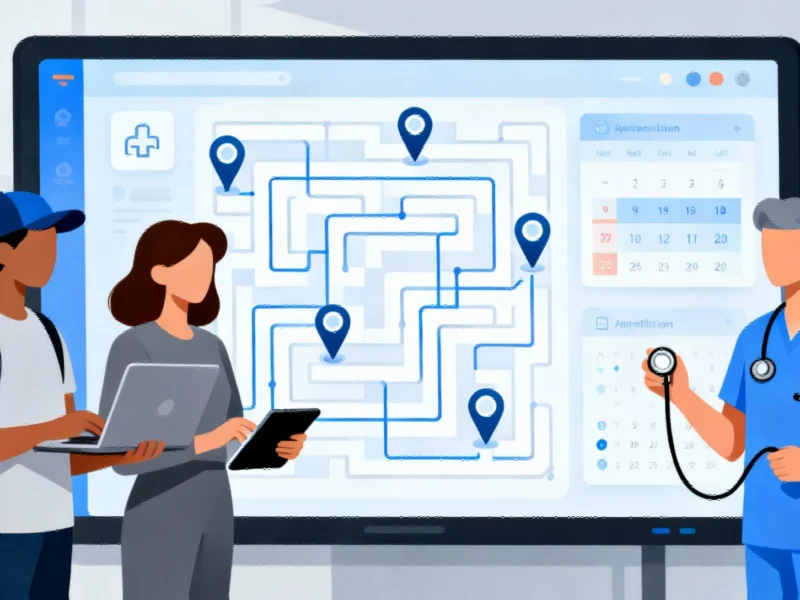The New Railroad: Healthcare’s Data Infrastructure Boom
Healthcare is witnessing a transformation comparable to the 19th century railroad expansion that revolutionized multiple industries, according to industry analysis. Just as railroads enabled entirely new economic possibilities, today’s health data platforms are creating infrastructure that could fundamentally reshape medical innovation and care delivery, sources indicate.
Multiple converging forces have created this opportunity, analysts suggest. The mass digitization of health records through EHR adoption, policy pushes for interoperability, advances in computing power and AI, and record venture investment in digital health infrastructure are collectively enabling platforms that aggregate, normalize, and make deidentified health records accessible across the healthcare ecosystem.
From Claims Data to Clinical Depth
The market for deidentified health data has evolved significantly from its origins in insurance claims data, the report states. While claims data offered standardized, billable events that provided wide but shallow views of patient care, its limitations have become increasingly apparent. Claims data lacks clinical depth, has long lag times, and introduces systemic bias by excluding uninsured patients, according to industry experts.
More recently, novel data sources have entered the market. Electronic Health Records data provides rich clinical nuance, enabling outcomes analysis and real-time clinical trial identification. Personal health records, wearables, and patient-reported outcomes collected through digital platforms have expanded the landscape further, offering insight into lifestyle, adherence, and real-world effectiveness.
Diverse Approaches to Data Platform Development
The competitive landscape features dramatically different approaches to building healthcare’s data infrastructure, according to reports. Companies like OMNY Health, Briya Health, and Truveta are creating two-sided marketplaces connecting clinical data sources to data users such as pharmaceutical companies and medical device firms. Their value proposition lies in surfacing rich new datasets historically locked within siloed EHR systems.
Other platforms like Komodo Health and PurpleLab aggregate both claims and clinical data from third-party sources, betting that differentiation will come from analytics tools, visualizations, and machine learning capabilities rather than just data access. Meanwhile, Evidation Health has taken a consumer-focused approach, building direct relationships with individuals who explicitly permission their data for research use.
The competitive dynamics in healthcare AI and data platforms are intensifying as companies leverage network effects to create value, sources indicate.
The Epic Challenge: An Established Player’s Advantage
Perhaps the most significant competitive threat comes from established EHR giant Epic, which introduced its Cosmos enterprise data collaboration initiative in 2019, according to industry reports. Epic’s platform threads together deidentified, longitudinal patient data contributed by participating health systems, creating what the company describes as a “commons” of clinical information.
Analysts suggest Epic holds structural advantages that could prove decisive. As the EHR supplier for more than 40% of hospital systems, Epic already “owns the pipes” and can natively collect, normalize, and operationalize clinical data at scale. Compared to independent players who must negotiate data access and integrate with non-Epic systems, Epic’s advantage is both technical and institutional, the report states.
The company’s private status also gives it the privilege of patience, allowing heavy investment in long-cycle R&D without quarterly earnings pressure, sources indicate.
Broader Implications for Healthcare Innovation
The promise of real-world data extends across multiple healthcare domains, according to analysts. Pharmaceutical companies are using RWD to complement traditional clinical trials, while medical device firms analyze post-market surveillance data. Payers examine longitudinal cost patterns, and researchers explore health disparities or intervention efficacy using these emerging data resources.
The transformation parallels developments in other sectors where data platforms are creating new economic opportunities. Similar to how business leadership transitions can reshape corporate strategy and how technology companies are deploying AI to transform workforce development, healthcare’s data revolution represents a fundamental shift in how value is created and captured.
Challenges and Future Directions
Despite significant growth potential, data platform companies face meaningful business challenges, according to industry analysis. These include the capital intensity of data acquisition and processing, the technical complexity of data harmonization, evolving privacy regulations, and the difficulty of sustaining both sides of a marketplace simultaneously.
Success will require executing on multiple fronts, sources suggest. Platforms must demonstrate clear value to both data contributors and users while navigating complex healthcare regulations and health system operational challenges. As with other infrastructure-intensive sectors experiencing transformation, such as energy generation and cybersecurity, the healthcare data platform space will likely see continued evolution and consolidation.
The stakes are high, analysts suggest, but so is the potential. Much like the railroads of the 19th century, today’s health data platforms are laying the tracks for a new kind of healthcare economy where insight, evidence, and innovation can move faster and more freely than ever before.
This article aggregates information from publicly available sources. All trademarks and copyrights belong to their respective owners.



